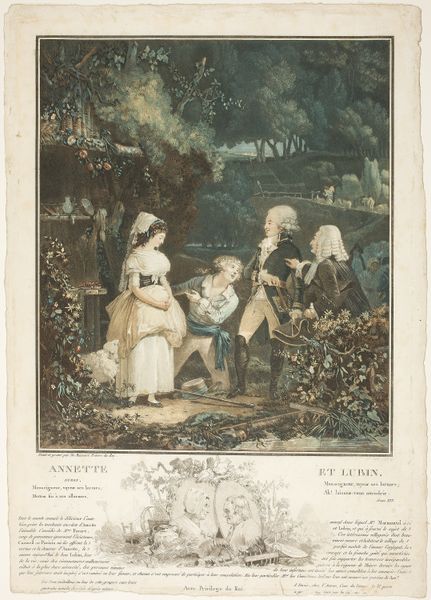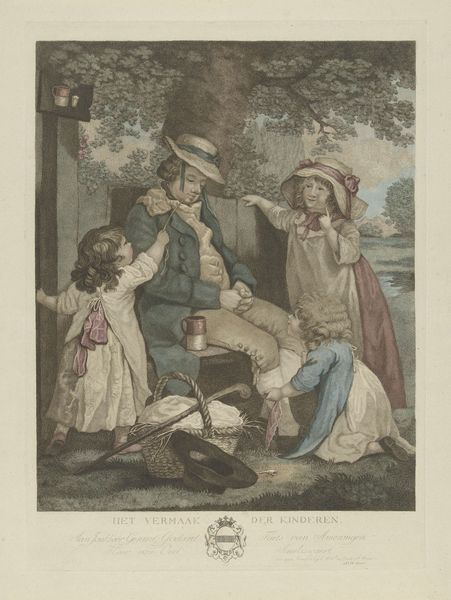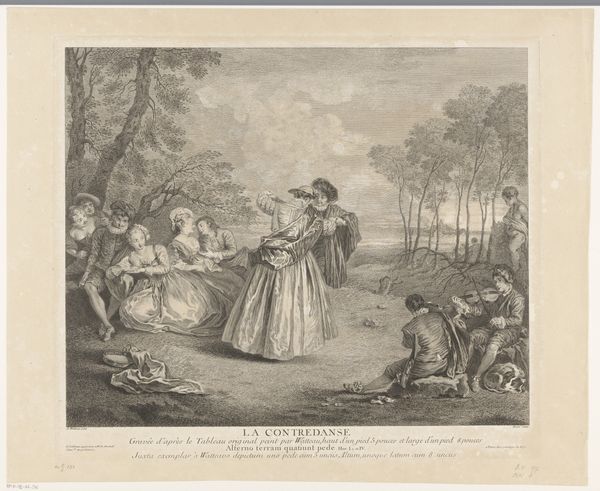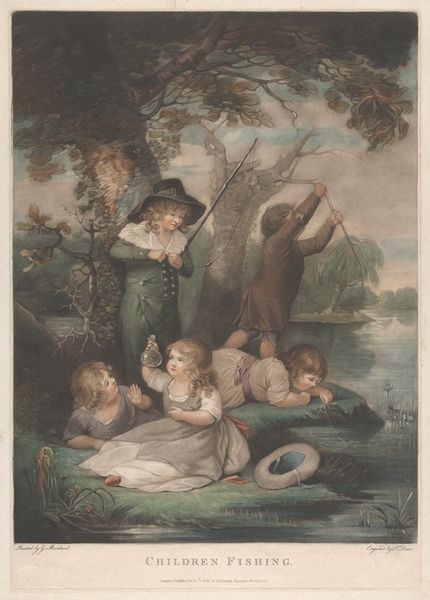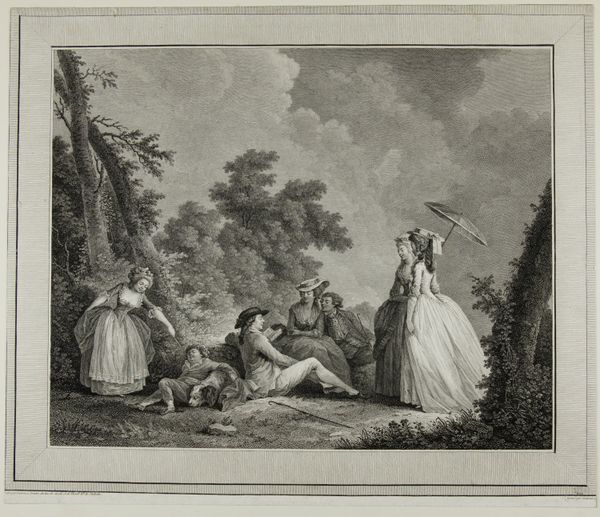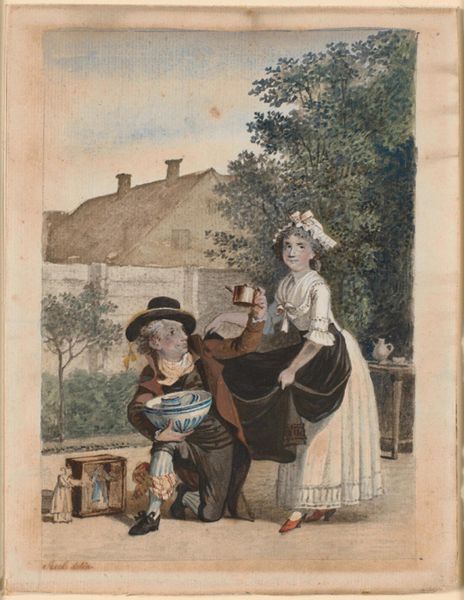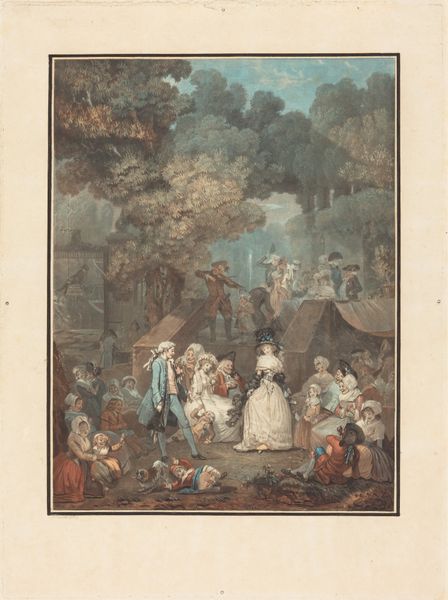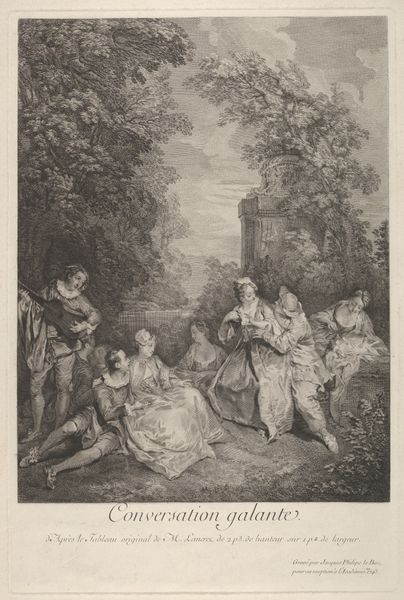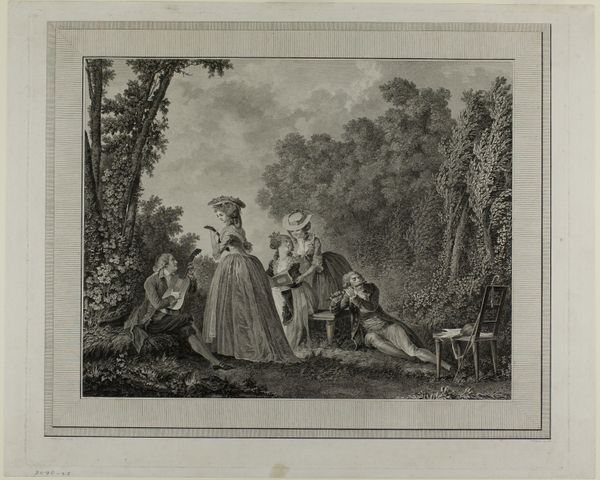
engraving
#
aged paper
#
light pencil work
#
muted colour palette
#
landscape
#
historical fashion
#
old-timey
#
romanticism
#
19th century
#
genre-painting
#
engraving
Dimensions: height 496 mm, width 363 mm
Copyright: Rijks Museum: Open Domain
Curator: This is "Ouders en spelende kinderen," which translates to "Parents and playing children," an engraving created sometime between 1772 and 1843. The artist's name is Pieter Hendrik Jonxis, and the work is held at the Rijksmuseum. Editor: Immediately, I’m struck by the calm, almost pastel-like coloration and the clearly defined space around each figure. There’s a palpable sense of tranquility, a perfectly composed tableau. Curator: Notice how Jonxis uses light and shadow to create depth, particularly in the drapery and the background foliage. The engraving technique lends a certain formality, yet the arrangement maintains a sense of informality. The family almost spills from their domestic threshold, connecting private life to the open nature beyond. Editor: The arrangement does seem deliberate. A dog and children inhabit the immediate foreground with what could be described as play. What are your insights into the placement of the mug on the stool in proximity to children who appear parched and curious, or that cone-shaped object being dangled teasingly in the elder girl's hand by her father? There seems a story afoot in this snapshot. Curator: These images could invoke parental expectations around class and privilege, a tension embedded in a Dutch middle-class identity emerging around domestic scenes of simple elegance and harmony, especially around this time. But beyond this subject's implicit class critiques, the use of the cross-hatching technique adds depth, doesn't it? It’s not just representational; it is adding to a visual harmony by balancing light and darkness with its subtle, organized patterns. The muted colour palette too serves not to detract but to accentuate the compositional structure, emphasizing relationships. Editor: Yes, the symbols. Consider the dog sniffing the ground, an unconscious state of curiosity next to children exploring at surface level and learning social rituals, such as play. The entire scene emphasizes childhood’s potential. Curator: It is fascinating how Jonxis manages to balance realism with a stylized approach. Editor: Absolutely, Jonxis invites us to find meaning not only in the overt content but in the unspoken interactions between color, form, and composition. I like the emotional depth conveyed with so few visual elements, or maybe I should say it offers insight into emotional relationships despite an overall visual restraint.
Comments
No comments
Be the first to comment and join the conversation on the ultimate creative platform.


